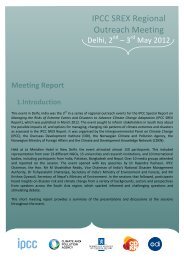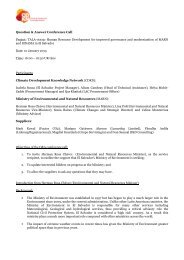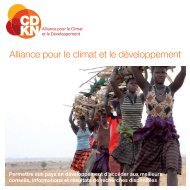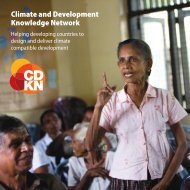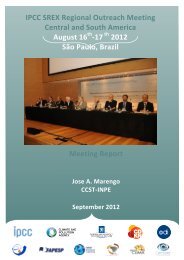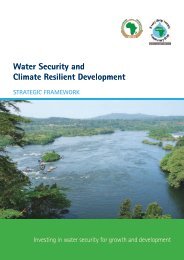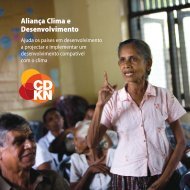Implementation Plan - CDKN Global
Implementation Plan - CDKN Global
Implementation Plan - CDKN Global
- No tags were found...
You also want an ePaper? Increase the reach of your titles
YUMPU automatically turns print PDFs into web optimized ePapers that Google loves.
CARICOM IMPLEMENTATION PLAN FOR THE REGIONAL FRAMEWORK FOR ACHIEVING DEVELOPMENT RESILIENT TO CLIMATE CHANGEA call for transformational changeThe imperative for transformational change is embedded within the call to action of the Liliendaal Declaration onClimate Change and Development which was issued from the thirtieth meeting of CARICOM Heads in Liliendaal,Guyana, July 2-5, 2009. (see Annex 6). The Declaration makes a number of commitments, endorsements andspecific declarations on the actions needed to manage the effects of climate change and development.The Heads of Government expressed grave concern that the region’s efforts to promote sustainable developmentand achieve the MDGs are under severe threat from the devastating effects of climate change and sea levelrise. Of particular note is the increasing intensity of extreme weather events, resulting in severe damage tothe region’s socio-economic structure and natural resource base. CARICOM Heads also emphasized that thedevastating effects of changing climate were already being experienced in all Small Islands and Low-lyingCoastal Developing States (SIDS) including the Caribbean and that many SIDS will cease to exist without urgent,ambitious and decisive action by the international community.The Liliendaal Declaration called for, inter alia:• That all Parties to the UNFCCC should work with an increased sense of urgency and purpose towardsarriving at an ambitious and comprehensive agreement at the COP 15 in Copenhagen in 2009 whichprovides for: long-term stabilization of atmospheric greenhouse gas concentrations at levels whichwill ensure that global average surface temperature increases will be limited to well below 1.5°Cof pre-industrial levels; that global greenhouse gas emissions should peak by 2015; global CO2reductions of at least 45 percent by 2020 and reducing greenhouse gas emissions by more than 95%of 1990 CO2 levels by 2050.• Adaptation and capacity-building must be prioritized and a formal and well-financed frameworkestablished within and outside the UNFCCC, including the multi-window insurance facility, toaddress the immediate and urgent, as well as long-term, adaptation needs of vulnerable countries,particularly the SIDS and the LDCs.• The need for financial support to SIDS to enhance their capacities to respond to the challengesbrought on by climate change and to access the technologies that will be required to undertakeneeded mitigation actions and to adapt to the adverse impacts of climate change.44



